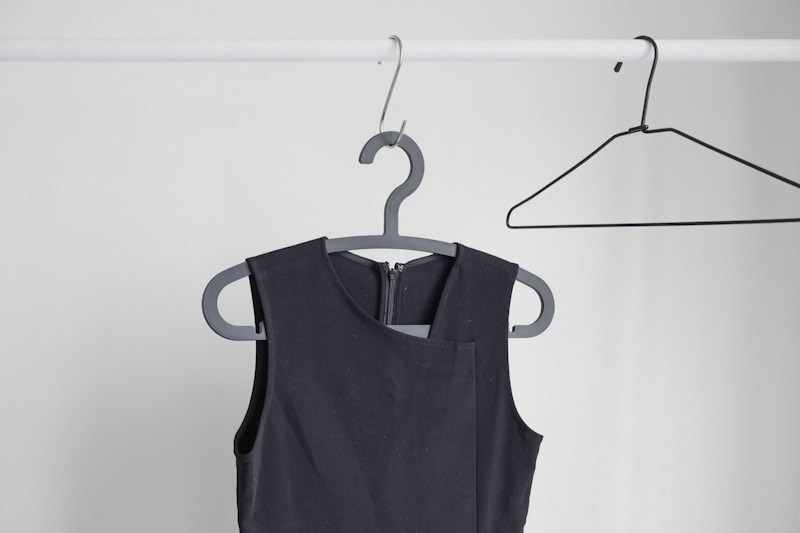Essential Guide to Photographing Your Dress Fitting for Reference
Introduction
When it comes to choosing the perfect dress for that special occasion, every little detail matters. One crucial aspect that can often be overlooked is documenting your dress fitting process. Photographing your dress fitting for reference not only helps you remember the fit and design elements you love but also serves as a useful tool when discussing alterations with your tailor. In this article, we will explore the best practices for photographing your dress fitting, what to focus on, and tips for ensuring your pictures effectively capture the outfit.
Why Photographing Your Dress Fitting Matters
Many brides and event-goers underestimate the power of visuals in the fitting process. Here are a few reasons why photographing your dress fitting for reference is indispensable:
- It provides a concrete record of the dress’s current state.
- Visual aids can convey your preferences to your tailor, streamlining the alteration process.
- It allows you to track how the dress fits over time, especially if multiple fittings are required.
- Snapshots can remind you of various dress styles, cuts, and colors you might consider in the future.
What to Capture During Your Dress Fitting
When you’re at your dress fitting, knowing what to photograph is key. Here’s a checklist of essential shots to take:
| Shot Type | Description |
| Full-Length View | Capture the entire dress from head to toe to evaluate the overall silhouette. |
| Close-Up of Details | Zoom in on intricate details like beading, embroidery, or sewing, which may be significant for your decision. |
| Side Profile | This showcases how the dress fits in profile, revealing potential adjustments needed. |
| Back View | The back is as crucial as the front; ensure to document this view as well. |
| Comfort Shots | Photograph yourself sitting or moving in the dress to assess comfort and mobility. |
Tips for Successful Dress Fitting Photography
Now that you know what to capture, let's discuss how to take those photos effectively:
1. Use Proper Lighting
Lighting can make or break your photographs. Aim for natural light whenever possible. If you’re indoors, stand near windows or bright areas. Avoid harsh artificial light, as it can distort colors.
2. Choose the Right Background
A cluttered background can distract from your dress. Choose a simple, clean backdrop that emphasizes the outfit. A plain wall or a curtain can serve as an excellent backdrop.
3. Capture Movement
Don’t hesitate to take action shots. Twirling, walking, or sitting will help you capture how the dress moves with you. It’s essential to see how the fabric flows and fits during real-life scenarios.
4. Take Multiple Shots
Try different angles and take multiple photos of the same shot. This way, you can pick the best one later. You might find a particular angle highlights features you hadn't considered.
5. Don’t Forget the Details
As mentioned earlier, close-ups of details can be vital. Capture zippers, stitches, lace, and any other distinct details that contribute to the dress's uniqueness.
Engaging with Your Tailor Using Reference Photos
Once you’ve taken your photographs, it’s essential to effectively communicate with your tailor. Here are some suggestions:
- Share the photographs via email or messaging apps for quick reference.
- Annotate the images if you have particular requests or points of concern.
- Discuss the emotions the dress evokes based on the visuals.
Related Questions You Might Have
As you embark on this journey of capturing your dress fitting, you may have other questions. Here are some that others frequently ask:
- What camera settings are best for photographing clothing?
- Can I use my smartphone, or do I need a professional camera?
- How do I ensure that the dress looks true to color in photos?
- Is it necessary to hire a professional photographer for this?
1. What Camera Settings Are Best for Photographing Clothing?
If you are using a DSLR, consider using a higher aperture (like f/8) for sharper images and ensure your ISO setting is low to reduce noise.
2. Can I Use My Smartphone, or Do I Need a Professional Camera?
Modern smartphones come with excellent cameras. They are usually more than enough for capturing your dress fitting photos, especially with good lighting and composition.
3. How Do I Ensure That the Dress Looks True to Color in Photos?
To maintain the dress’s actual color representation, turn off any flash and utilize natural light. Take photos at different times of day to see when colors appear the most accurate.
4. Is It Necessary to Hire a Professional Photographer for This?
Unless you want high-fashion shots, it isn’t necessary to hire a professional. With a few tips and good lighting, you can achieve fantastic results yourself.
Conclusion
Photographing your dress fitting for reference is an invaluable step in the quest for the perfect gown. By documenting the process, you can ensure that your dress is tailored to suit your vision perfectly. Remember to focus on essential details, utilize proper lighting, and clearly communicate with your tailor using your photographs. Whether you're preparing for a wedding, a gala, or any significant event, these visual records will serve as both reference and cherished memories. Happy dressing!
